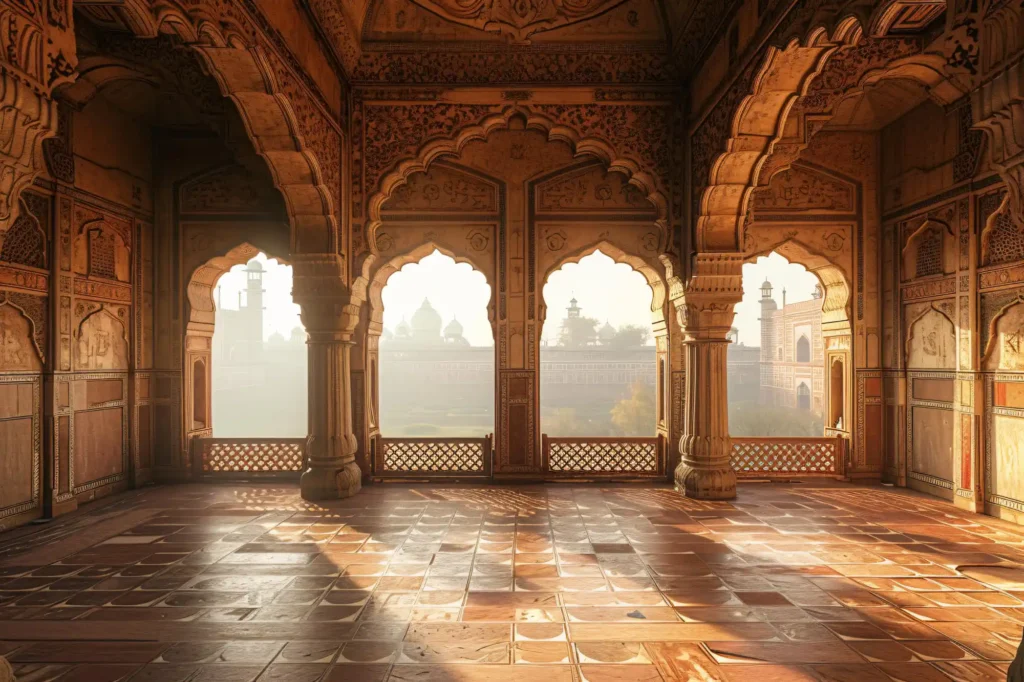Tourism
About Tourism
Tourism is the act of traveling for leisure, exploration, or business, offering a gateway to new experiences, cultures, and landscapes. It plays a vital role in global economies by creating employment opportunities, supporting local businesses, and fostering cultural exchange.
Whether it’s wandering through historic cities, relaxing on sun-kissed beaches, trekking through scenic mountains, or immersing oneself in spiritual retreats, tourism enriches lives and broadens perspectives. With the rise of eco-tourism and responsible travel, modern tourism also emphasizes sustainability—encouraging travelers to respect the environment and local traditions.
At its core, tourism is more than just travel—it's about discovery, connection, and creating memories that last a lifetime.
Heritage
Heritage tourism in India is a diverse sector that encompasses the exploration of historical and cultural sites, the preservation of traditions, and the promotion of sustainable development. This form of tourism provides travelers with a unique and enriching experience, while also playing a significant role in both the economic and cultural development of the country.

UNESCO World Heritage Sites:
World Heritage Sites are renowned landmarks and areas that receive legal protection under an international treaty administered by UNESCO due to their cultural, historical, or scientific significance.
- UNESCO plays a vital role in promoting global cooperation in education, science, culture, and communication to foster peace. Its mission encompasses safeguarding cultural and natural heritage, promoting education for all, and encouraging international collaboration on common challenges.
- India holds the esteemed 6th position globally in terms of UNESCO World Heritage Sites, boasting a total of 43 listed sites. These sites stand as a testament to India's rich history, vibrant culture, and diverse natural heritage.
- India is home to a multitude of heritage sites that showcase its rich history, diverse culture, and architectural marvels.
- From the iconic Taj Mahal in Agra to the historic Red Fort in Delhi, these sites offer a glimpse into India's past and underscore the country's cultural significance. Other notable heritage sites include the ancient temples of Khajuraho, the majestic forts of Rajasthan, and the well-preserved caves of Ajanta and Ellora. Each site tells a unique story and provides valuable insight into India's heritage and legacy.

Wildlife
India is home to some of the world's most diverse ecosystems, boasting an impressive 103 National Parks, 543 Wildlife Sanctuaries, and approximately 769 protected forests, including 50 Tiger Reserves.
The Jungle Safaris organized in these areas attract wildlife enthusiasts and nature lovers from around the globe.
- India's wildlife is truly unparalleled, offering a unique and unforgettable experience for travelers. The rapidly growing sector of wildlife tourism not only has the potential to boost the economy but also contribute to conservation efforts.
- The Indian landscape is enriched by its mesmerizing natural beauty and diverse wildlife species, making it a destination like no other. India leads the way in wildlife conservation and tourism, setting an example for the rest of the world.
- From the majestic Royal Bengal Tigers and Asiatic Lions to Indian Wild Elephants, One-horned Rhinoceros, Leopards, and a variety of deer, bears, boars, and buffaloes, India's wildlife is truly remarkable. The country is also home to numerous species of avifauna, reptiles, and aquatic fauna, further enriching its forests.
Culture
Cultural tourism is a sophisticated form of travel that centers around immersing oneself in the distinctive cultural aspects of a destination, including its history, art, architecture, music, folklore, and traditions. This type of tourism entails visiting historical sites, museums, art galleries, and other cultural attractions, as well as engaging with the local community to gain a deeper insight into the culture.

- Participating in cultural tourism not only enables travelers to admire and learn about different cultures but also plays a role in supporting the well-being of local communities and the conservation of cultural heritage. It is an enriching and enlightening form of travel that fosters respect and understanding among diverse peoples and traditions on a global, national, and local scale.
- For instance, landmarks such as the Ajanta and Ellora Caves in Maharashtra and Mahabalipuram in Tamil Nadu exhibit ancient artistic and cultural accomplishments. Furthermore, architectural marvels like the Amba Vilas Palace in Mysore and the Red Fort in Delhi offer glimpses into the lifestyles of royalty and the political history of a region.
- In essence, cultural tourism presents a valuable opportunity for travelers to delve into and appreciate the richness of cultures worldwide while contributing to the safeguarding and promotion of cultural heritage.

Adventure
Adventure tourism involves participating in exciting and challenging activities in natural settings, often requiring physical skill and a certain level of risk. It is a specialized form of tourism where exploration and travel include an element of risk, whether real or perceived, and may require special skills and physical exertion.
Adventure tourism can encompass a wide range of activities that involve physical activity, cultural exchange, and a connection with nature.
Some examples of adventure tourism activities include:
- Hiking and trekking: Exploring trails and mountains.
- Rock climbing and mountaineering: Scaling cliffs and peaks.
- White-water rafting and kayaking: Navigating rapids and rivers.
- Scuba diving and snorkeling: Exploring underwater ecosystems.
- Safari tours: Wildlife viewing and exploration.
- Bungee jumping and skydiving: Thrilling adrenaline-pumping experiences.
- Caving and spelunking: Exploring underground caves.
- These activities provide individuals with the opportunity to challenge themselves, experience new adventures, and immerse themselves in the beauty of the natural world. Adventure tourism offers a unique and unforgettable way to explore and appreciate the wonders of our planet.
Medical
Medical tourism, also known as medical travel, health tourism, or global healthcare, is the practice of traveling across international borders to seek healthcare services. This industry is experiencing rapid growth as patients search for cost-effective, specialized treatments, and high-quality healthcare in countries like India.
India has emerged as a leading destination for medical tourism due to its affordability, access to specialized treatments, and top-notch healthcare facilities. Patients often choose to travel to India for procedures such as cardiac care, orthopedics, cancer treatment, and dental procedures.

- The lower prices offered by clinics and hospitals in developing countries are directly tied to the economic status of the nation. The correlation with the per capita gross domestic product serves as a proxy for income levels, resulting in surgery prices that are 30% to 70% lower in countries that promote medical tourism.
- Chennai, known as the Healthcare Capital of India, boasts world-class hospitals like Apollo Hospitals and is a sought-after destination for cardiac care, organ transplants, and cancer treatments.
- Bangalore serves as a hub for advanced medical technology and specialized treatments such as robotic surgery, stem cell therapy, and fertility treatments.
- Delhi offers a wide range of specialized treatments, including neurology, orthopedics, and ophthalmology.
- In summary, medical tourism in India provides patients with the opportunity to access high-quality healthcare at a fraction of the cost compared to Western countries, making it an appealing option for those in search of affordable and specialized medical treatments.


